The best family trip experience in Nepal can frequently go far to advance it in lovely places above in the Himalayas. Family Treks in Nepal is an excellent decision as there are diverse trek trails any moderately fit person could attain. The incredible Himalayan ranges that run like spines throughout the nation dominate the northern line of Nepal. Asia's foremost Safari Park, Chitwan, limits its boundary with rich swamp wilderness greenery in the south. Nepal's novel culture, heritage, diverse landscapes, and wildlife surprise travelers. Alongside, possibly the friendliest people on earth aims to offer a lifetime experience to everyone who travels in Nepal.
Nepal is a country that always has more to offer the adventurous people, some of its most hostile terrain. There are trails beyond Everest Base Camp (5,364m) and the Great Himalayan Trail, a broad trail route covering most of Nepal. However, most family trekking with young kids is safe under an altitude of 4,000m within 3-10 days of the trek. Trekkers can personalize excursions and tours as per their preferences. Trekkers appreciate the opportunities to observe local cultures, festivals, and lifestyles of people in the Himalayas. Here's a quick brief on the Five Best Family Treks to do in Nepal.
Everest Base Camp Trek
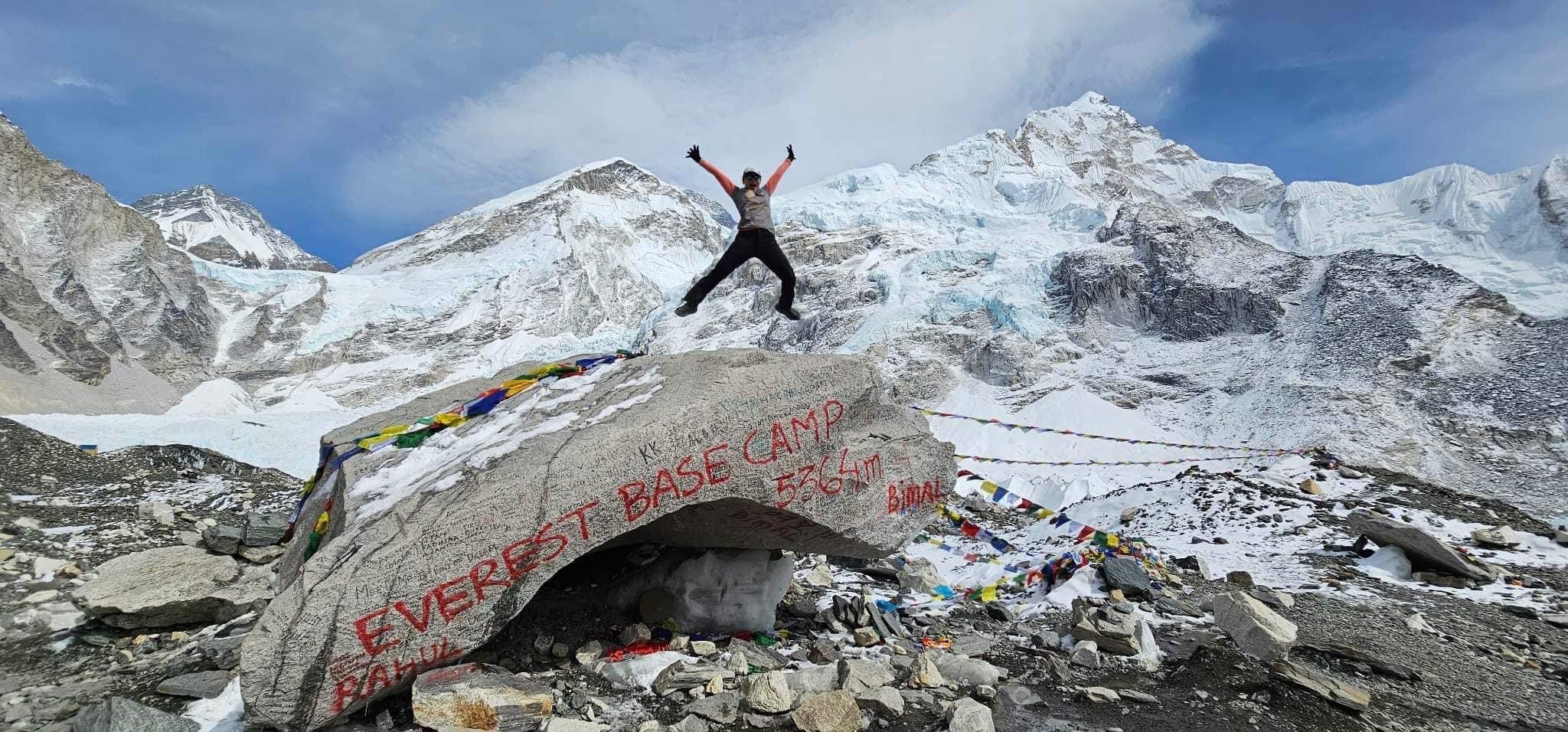
Everest Base Camp Trek is one of the most popular treks in Nepal, which could be a great family adventure. Autumn (Sep-Nov) and spring (Feb-May) seasons are the best time for the family trip. The stable weather and pleasant temperature at this time in the Everest region excite most trekkers. However, an off-season (monsoon and winter) trek is also possible if adequately prepared before the hike. Trekkers should be careful about their adaptability in high elevations and have a standard insurance package for this trek. Accommodations on this trail are simple lodges with basic facilities and foods with a variety of Nepalese, western, and Chinese cuisine. Meals are expensive because porters transport or carry everything up there.
Highlights Everest
- Breathtaking views of Everest and surrounding peaks.
- Unique interactions with Sherpa communities.
- Physically demanding trek with rewarding experiences.
- Dramatic ice formations like the Khumbu Glacier.
- Standing at the legendary base camp of the world’s tallest peak.
Moreover, this trek highlights the panoramic view of Mt. Everest alongside Nuptse, Lhotse, Ama Dablam, Pumori, and Cholatse. Rich ecosystems, wildlife, the Sherpa community's lifestyle, and people's incredible hospitality enhance your trip. Hence, Everest Base Camp is a fantastic family trek to experience the grandeur of the great Himalayan ranges.
Annapurna Base Camp Trek
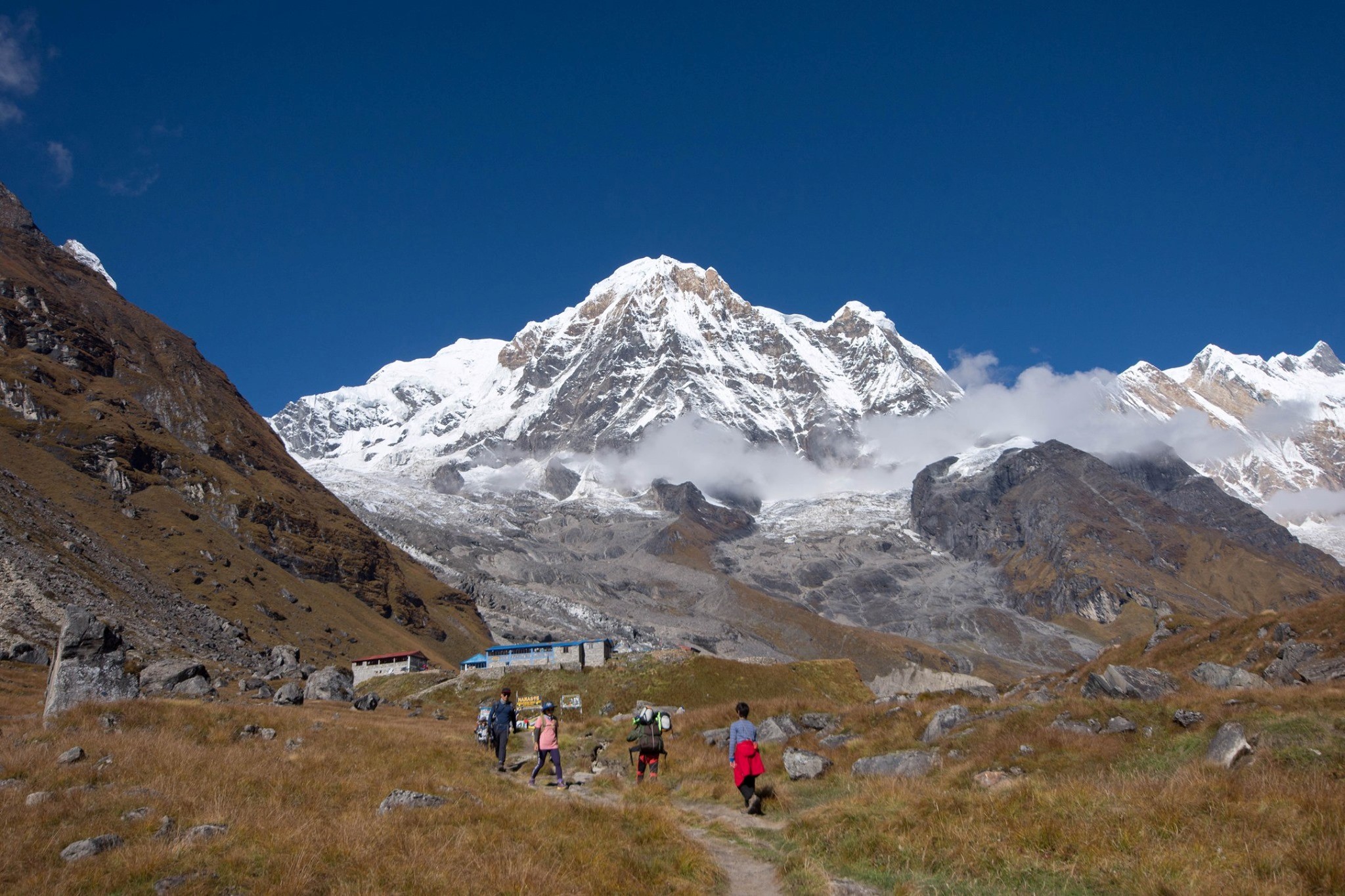
Annapurna Base Camp Trek is probably the second most trekked route in Nepal. Trek with family to the Annapurna region is the best choice as it is less harsh than Everest Base Camp. Spring and Autumn are the best months for a trip to the Annapurna region. Annapurna region has an unpredictable climate with the risk of altitude-related difficulties, so proper preparation is essential before the trek. Accommodation in the Annapurna region is famous for tourist-friendly lodges and teahouses. Meanwhile, food costs are varied on this trail as it will be cheaper when the trek starts and costly at a higher altitude.
Highlights Annapurna
- Panoramic vistas of Annapurna, Machapuchare, and Dhaulagiri.
- Varied terrain from lush forests to alpine meadows.
- Experience local Gurung and Magar village life.
- Explore diverse plant life and wildlife.
- Moderate difficulty trek suitable for various fitness levels.
This trek generally presents views of giant mountains like Annapurna I, Dhaulagiri, Hiunchuli, and other peaks of the Annapurna range. The most pleasant moment is the varied wildlife encounters of Himalayan Thar, monkeys, and birds while walking through the Sinuwa-Himalaya jungle. Also, trekkers can visit traditional Gurung villages, local people, and their cultures. Indeed, this trek is the best family trek to make remarkable memories around beautiful places in the Annapurna region.
Mardi Himal Trek
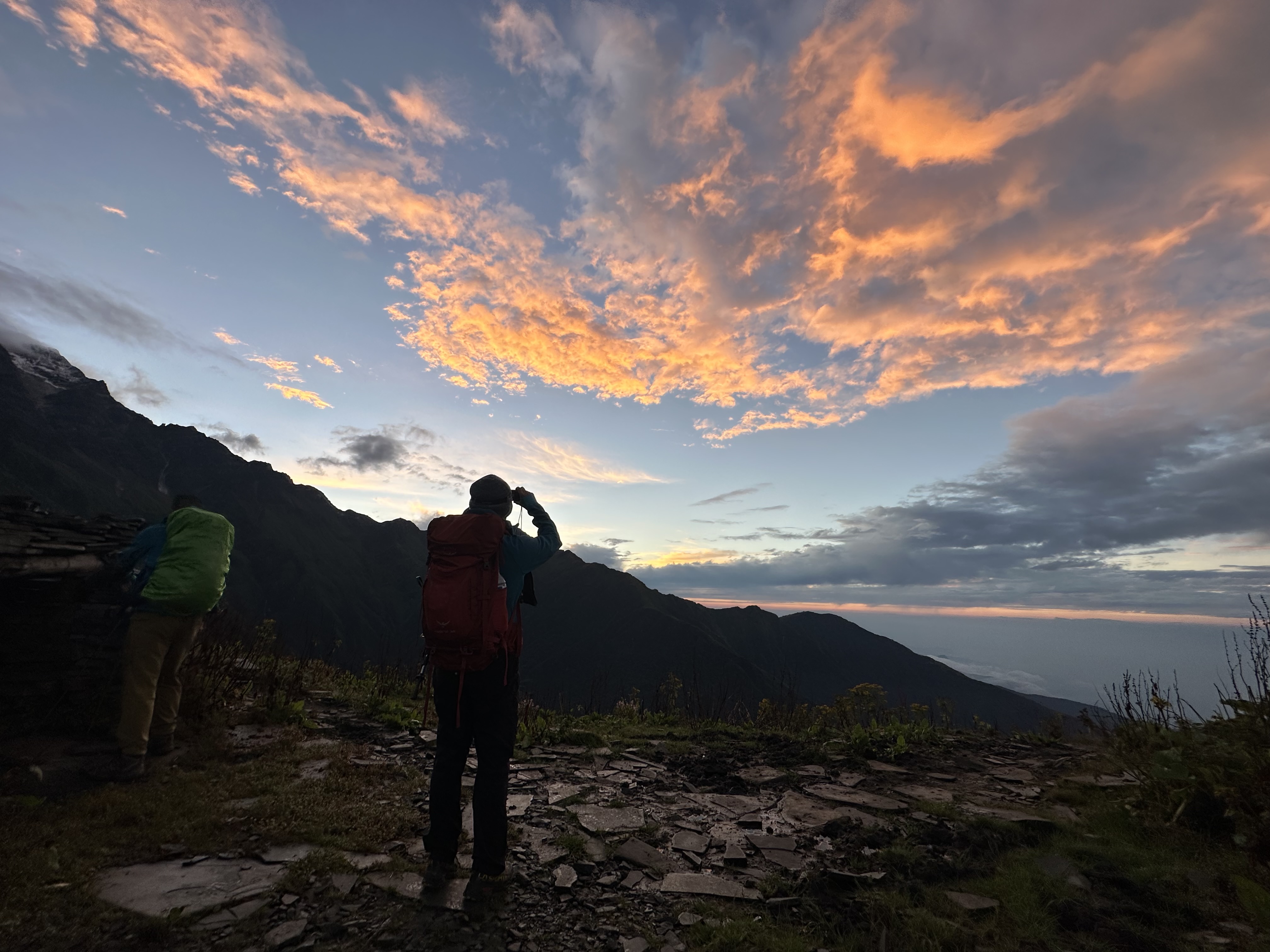
Mardi Himal Trek is a popular short trek in the east Annapurna region that offers vast natural faces. The trekkers can spy on stunning views of Annapurna I, Machhapuchhre, Mardi Himal, and other peaks from Mardi Viewpoint. Any moderately fit person of all age groups can easily do this trek. Autumn and spring seasons have excellent climates with a clear sight of glorious mountains everywhere on the trail. Rhododendrons and oak trees are all over the course at this time of the year.
Mardi Himal Highlights
- Panoramic vistas of Mardi Himal, Annapurna, and Machapuchare.
- Diverse landscapes from lush forests to high-altitude ridges.
- Less crowded, offering a more tranquil trekking experience.
- Experience traditional rural life in remote villages.
- Discover rich biodiversity, including rhododendron forests and Himalayan wildlife.
The panoramic views of the mightiest mountains with an unhindered sunrise and sunset are a unique attraction of this trek. Likewise, trekkers can experience the lifestyle of the Gurung people and their cultures in local villages. This trek is a great family escape into the Himalayas' lap for an enjoyable trip with loved ones.
Ghorepani Poonhill Trek
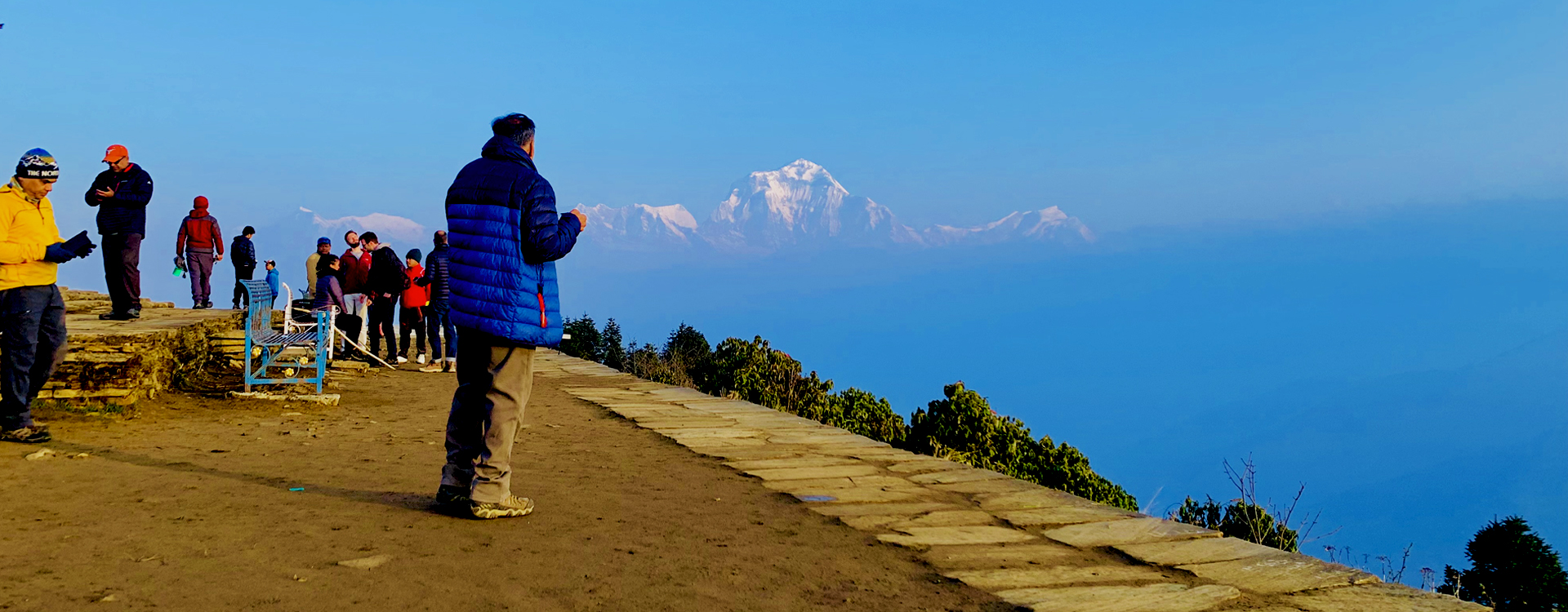
Ghorepani Poonhill Trek is one of the best family treks in Nepal in a short time and budget. It is also known as the Annapurna Poonhill Trek, an average 5-10 days long journey. While maximum height gain remains under 3,210m, it is a more leisurely trek with rare altitude-related difficulties.
Ghorepani Poonhill Highlights
- Stunning sunrises over the Annapurna and Dhaulagiri ranges from Poon Hill.
- Enjoy diverse landscapes, including lush rhododendron forests and terraced fields.
- Explore traditional Gurung and Magar villages along the trail.
- A relatively easy trek suitable for various fitness levels.
- Experience a range of flora and fauna, including vibrant rhododendrons and local wildlife.
Autumn and spring season are the best seasons for this trek. However, this trek is easily accessible throughout the year except in the monsoon. These amusing trails of the Annapurna region take across rich natural habitats, wildlife, local cultures, and lifestyles. Food and accommodation are more tourist-friendly as the transportation system is close to this trail.
Poonhill (3,210m), a hill station near Ghorepani, is this trek's ultimate attraction. This hilltop gives you breathtaking views of Annapurna I, Machhapuchhre, Dhaulagiri, Hiunchuli, and other distinct peaks. Furthermore, this viewpoint offers a delightful view of sunrise and sunset that will make your family trip unforgettable.
Everest Panorama Trek
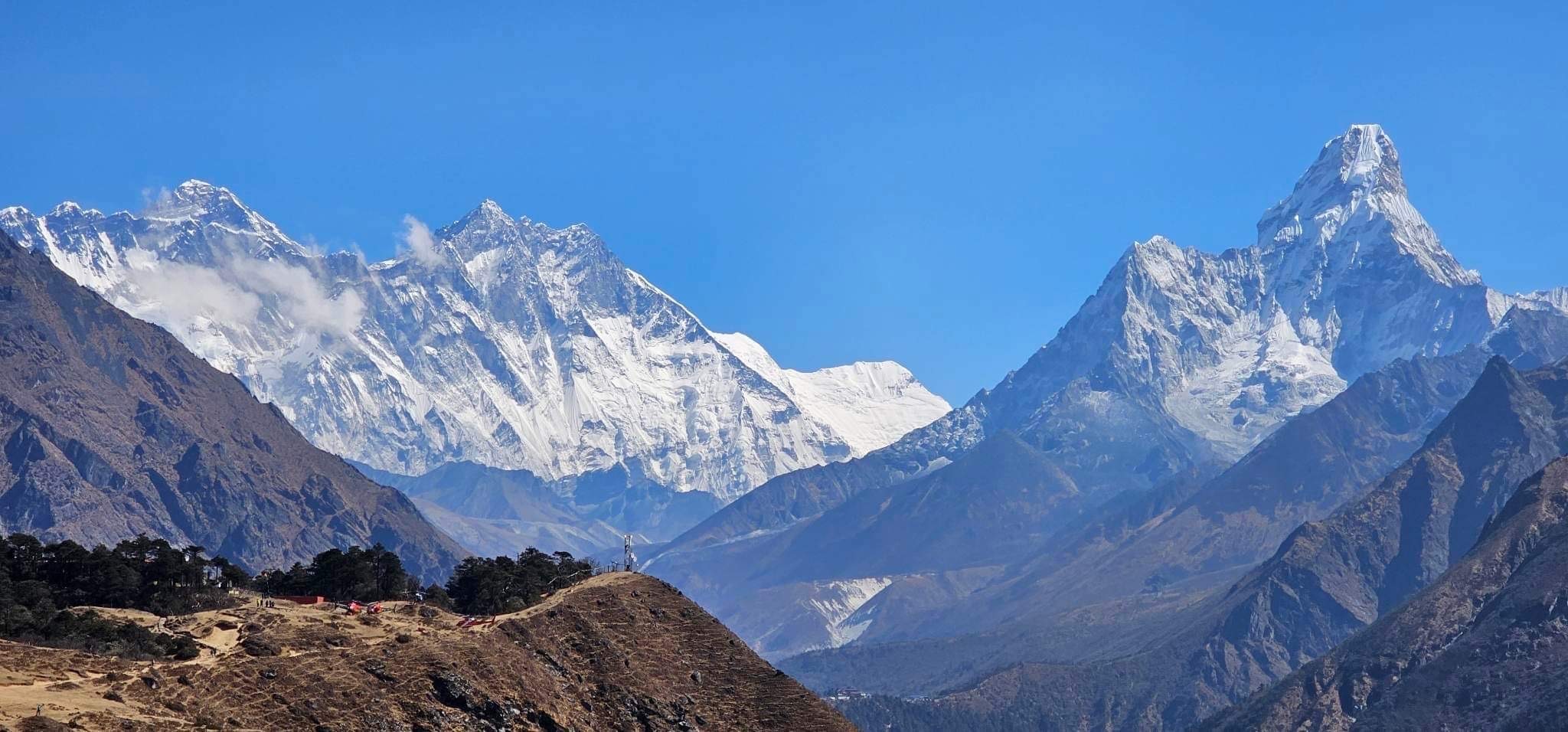
Everest Panorama Trek features the joy of being close to the highest mountains in the world. Moreover, this trek presents the Tibetan religious community, the monastery of Tengboche, and the rich Sherpa culture. The impressive views of Mt. Everest, Lhotse, Nuptse, and the most beautiful Ama Dablam from Everest View Hotel are undeniable.
Everest View Trek Highlights
- Stunning panoramas of Everest, Lhotse, and Ama Dablam.
- Interaction with Sherpa communities and exploration of traditional monasteries.
- Relatively easy trek with incredible rewards, suitable for various fitness levels.
- Picturesque trails through lush forests and charming villages.
- Visit the renowned Tengboche Monastery with its significant spiritual heritage.
This expedition is short in days, and the maximum height gain will be only 3,860m. Therefore, altitude sickness would not be a significant problem on this trek. Other benefits of this trip are famous lodgings and assorted meals. This trek is made for families to have a superb experience amidst exotic mountains in the Everest region.
Langtang Valley Trek
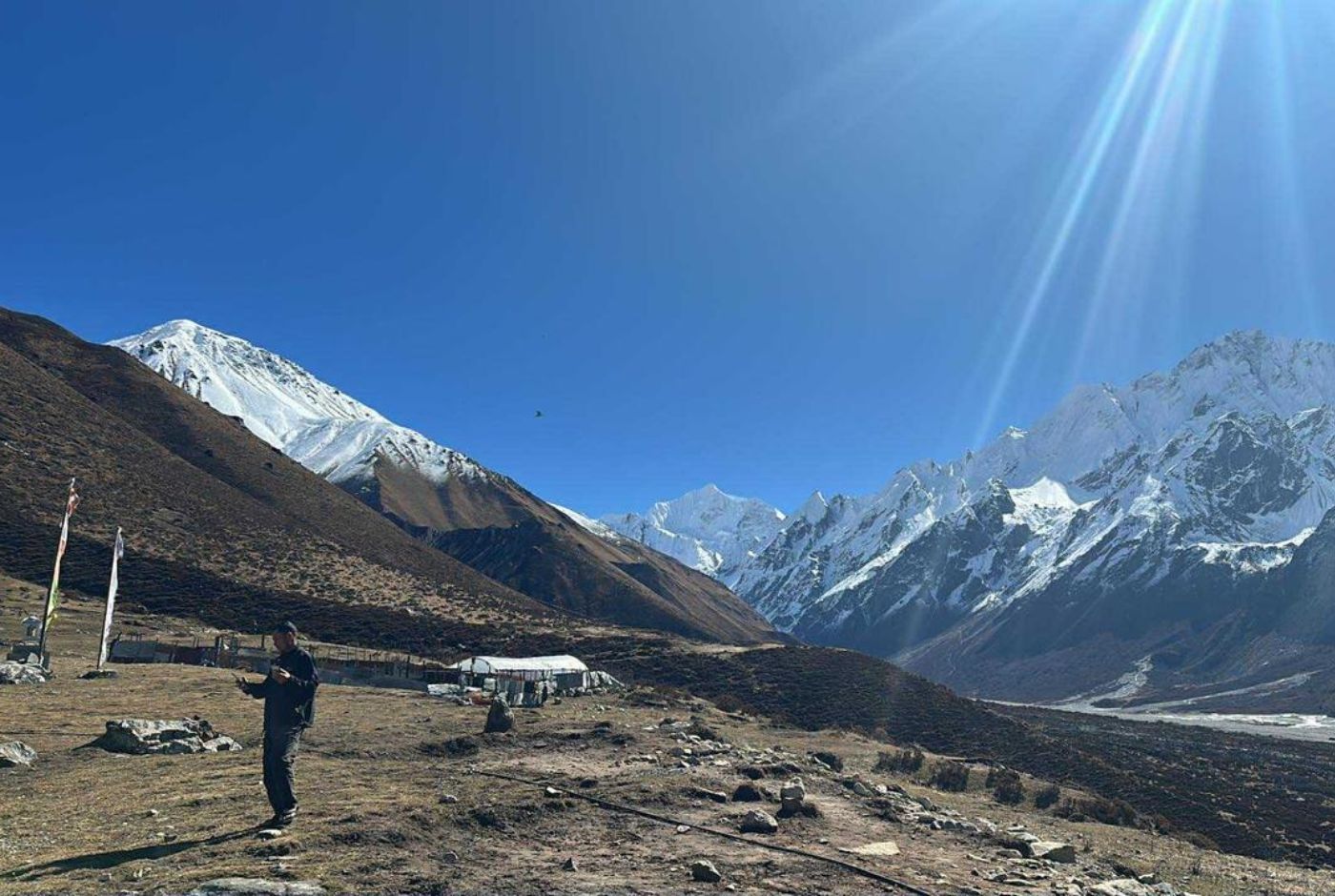
Langtang Valley Trek sits north of Kathmandu and works really well for families wanting a proper Himalayan experience without the intensity of longer routes. The valley runs through Langtang National Park, where thick rhododendron forests at lower elevations gradually open up into meadows and then rocky high altitude zones. Kids handle the altitude better here because it builds up slowly over several days instead of jumping dramatically.
You start from Syabru Besi and follow the Langtang Khola river upstream through Tamang and Sherpa villages. These communities have deep Tibetan roots that show up everywhere. Prayer flags cross the trails, stone mani walls line the paths with carved Buddhist mantras, and small monasteries dot the landscape. Children usually get fascinated watching monks do their prayers or seeing how villagers live their daily lives in the mountains.
The route passes through places like Lama Hotel and Langtang village before reaching Kyanjin Gompa at 3,870 meters. This village has a 300-year-old monastery and a cheese factory that Werner Schulthess, a Swiss guy, set up in the 1950s. He taught locals how to make European-style cheese from yak milk and they've kept it going ever since. Most kids remember trying fresh yak cheese here, whether they love it or pull faces at the strong taste.
From Kyanjin Gompa, you have options depending on who's in your group. Tsergo Ri climbs to 5,050 meters and shows off massive views of Langtang peaks and even Shishapangma at 8,027 meters over the border in Tibet. Kyanjin Ri at 4,773 meters takes less effort. Families with younger children often skip the big climbs and just explore valleys near the village or walk partway toward Langtang Glacier.
Wildlife keeps things interesting during walking days. Red pandas live in the lower forests though spotting them needs serious luck. Himalayan monals, which are Nepal's national bird, show bright colors when they appear in clearings. Yaks graze in huge herds once you're above the tree line, and watching these massive animals up close never gets old for children. Langur monkeys, Himalayan tahrs on rocky slopes, and sometimes musk deer also live throughout the park.
This trek suits families because teahouses appear regularly, so you're never stuck too far from food, warmth, and a bed. Trail conditions stay decent and daily walking distances won't completely exhaust everyone. The village people have seen plenty of families come through and know how to help when someone needs extra time or gets tired. Langtang Lirung at 7,246 meters dominates the skyline wherever you look, giving that classic Himalayan backdrop without requiring extreme effort to see it.
Weather matters a lot for planning. October through November and March through May give the clearest skies and best conditions. Winter brings snow that blocks higher areas. Monsoon season from June to August turns everything muddy and brings out leeches in the forested sections, which nobody enjoys dealing with.
The 2015 earthquake hit Langtang village particularly hard, wiping out much of it. The rebuilding effort shows how resilient these mountain communities are. Walking through now, you see both the recovery and the ongoing work to restore what was lost. It adds a layer of recent history that makes the trek more meaningful.
Langtang gives you real mountain scenery, Buddhist culture, and good trails without eating up three weeks of vacation time. For families, it balances adventure with manageable challenges in a way that works for different ages and abilities
Langtang Valley Trek Highlights
- Trek through Langtang National Park's different elevation zones, starting in subtropical forests and ending in alpine terrain near glaciers and high peaks.
- Experience daily life in Tamang and Sherpa villages where Buddhism shapes everything. Kids learn about different cultures just by being there and asking questions.
- Visit Kyanjin Gompa monastery at 3,870 meters, surrounded by prayer flags and mountain peaks. The setting alone makes it worth the walk up.
- Watch yak herds grazing above tree line. These animals are central to how people survive and work in high altitude areas, not just photo opportunities.
- Hike up to viewpoints like Tsergo Ri at 5,050 meters or the easier Kyanjin Ri at 4,773 meters for sweeping Himalayan views including Langtang Lirung and peaks extending into Tibet.
- Taste fresh yak cheese at the factory in Kyanjin Gompa, made using Swiss techniques from the 1950s. It's become almost as famous as the trek itself.
- Spot wildlife along the way. Himalayan monals flash rainbow colors, langur monkeys jump through trees, and red pandas hide in lower forests if you get really lucky.
- Cross suspension bridges hanging over the rushing Langtang Khola river and pass waterfalls dropping from glaciers somewhere high above.
- Walk past prayer flags, mani walls, chortens, and prayer wheels that have actual spiritual meaning to the people living here, not just decoration for trekkers.
- Eat hearty meals at family-run teahouses. Dal bhat comes in huge portions, momos hit the spot after a long day, and Tibetan bread works great for breakfast.
- Follow ancient trade routes that connected Nepal and Tibet for centuries before the border closed. History runs deep through these valleys.
- See the impact and recovery from the 2015 earthquake, especially around Langtang village. The rebuilding tells a story about mountain communities bouncing back.
- Get close to glaciers and moraine fields near Kyanjin Gompa that show geological forces still actively shaping the Himalayas today.
Chisapani Nagarkot Hiking
Chisapani Nagarkot Hiking runs just outside Kathmandu and takes two to three days, making it good for families wanting a quick mountain trip. Kids around seven or eight handle it without much trouble. The route cuts through Shivapuri Nagarjun National Park where rhododendron and oak forests cover the hills. You start from Sundarijal and climb gradually through the park. Trails pass waterfalls and streams in several spots.
Mulkharka village comes first, a Tamang settlement with prayer flags hanging between houses. Children usually find village life interesting, watching how mountain families go about their daily routines. The walk to Chisapani at 2,165 meters doesn't push anyone too hard, and teahouses there provide decent food and beds for the night.
From Chisapani, mountain views open up when clouds stay away. Langtang range, Ganesh Himal, and other peaks line the horizon. Sunrise here changes colors across the mountains minute by minute, something kids remember later.
The trail to Nagarkot goes through more forest and passes additional Tamang and Newar villages with stone houses and small temples. Nagarkot sits at 2,175 meters and has built its reputation on mountain panoramas. Clear days show peaks from Kanchenjunga east to Dhaulagiri west. Most people wake early to catch sunrise from various viewpoints around town. More lodges operate here than Chisapani, so options for where to stay increase.
The final section drops down to Changu Narayan Temple, which dates to the 5th century. It's Nepal's oldest Hindu temple and sits on a hilltop surrounded by a traditional Newari village. Wood and stone carvings cover the temple structure. UNESCO added it to the World Heritage list. The architecture impresses people regardless of whether they care about temples normally. This whole trek keeps altitude low compared to longer routes, so nobody struggles with breathing or altitude sickness. Trail conditions stay decent except during monsoon from June to August when everything turns muddy. October through November or March through May give the best weather and clearest mountain views.
Being an hour from Kathmandu means you leave the city in the morning and start hiking quickly. The trek works for families stuck with short vacation time or people testing their legs before attempting bigger routes. Daily distances won't destroy anyone, and teahouses pop up regularly for food and rest. Local people along the way have dealt with plenty of families and help out when needed. It packs forest walks, village stops, mountain views, and an ancient temple into just a few days without requiring major time or fitness commitments.
Chisapani Nagarkot Hiking Highlights
- Trek through Shivapuri Nagarjun National Park's rhododendron and oak forests with trails that stay manageable for families.
- Watch sunrise from Chisapani or Nagarkot when light hits peaks like Langtang, Ganesh Himal, and Gaurishankar.
- Walk through Tamang and Newar villages where prayer flags hang and families maintain traditional ways of living.
- See mountain panoramas from Nagarkot stretching across major Himalayan peaks on clear days.
- Visit Changu Narayan Temple from the 5th century, Nepal's oldest Hindu temple and a UNESCO World Heritage Site with detailed carvings.
- Complete the trek in two to three days, perfect for limited schedules or warming up before longer treks.
- Start from Sundarijal just an hour outside Kathmandu, making it one of Nepal's easiest treks to reach.
Helambu Trek
The Helambu region lies 72 kilometers northeast of Kathmandu and offers one of those treks where altitude doesn't become a headache for families. Six days on this route keeps you between 1,350 and 3,650 meters. That range means nobody spends nights gasping for air or dealing with pounding headaches from thin oxygen. Kids over eight usually walk this without much complaining, though everyone's fitness varies. The name Helambu comes from the Helmu people who lived around Tarkeghyang centuries back. They're called Sherpas now, and their villages plus Tamang settlements make up most of what you see along the way.
Sundarijal starts the trek. From there you climb through Shivapuri National Park where rhododendron, oak, and pine forests cover everything. The trail goes to Chisapani first, then winds through Mulkharka and other villages before hitting Tharepati at 3,650 meters. That's the highest spot. Prayer wheels spin at village entrances. Mani walls line paths with carved Buddhist mantras. Small monasteries pop up in different settlements. Children watch monks doing their morning routines or villagers working with yaks, which usually sticks in their memory more than adults expect. On clear days from Tharepati, you see Ganesh Himal, chunks of Langtang range, and sometimes Manaslu way off in the distance.
After Tharepati, the route drops into Helambu Valley where things feel different. Melamchi Gaon shows up first, a Sherpa village with stone houses packed together and forests all around. Tarkeghyang comes next and it's the biggest village on the whole trek. There's a massive old monastery here, one of the most important in the region. The gompa has Tibetan Buddhist design and has stood for centuries. Stone houses squeeze close with narrow lanes threading between them. Families here run teahouses where you get dal bhat for dinner and basic rooms that stay clean enough. Sherpa hospitality in these places feels genuine, not performed for tourists. The valley itself sits lower than where you've been, so temperatures get milder and vegetation changes.
Walking continues to Sermathang, another Sherpa spot, before a vehicle takes you back to Kathmandu from Melamchi Bazaar. Each day takes four to six hours of actual walking, which leaves time for breaks and lunch stops.
Trails stay in reasonable shape and teahouses appear regularly, so you're never stuck without food or a place to crash. Monsoon season from June through August dumps rain constantly and makes everything slippery. Leeches in the forests get annoying too. October through November or March through May work better for weather and mountain visibility. Winter can bring some snow at higher sections but nothing compared to what happens on bigger treks. This six-day route gives you Sherpa culture, Buddhist stuff, forest walking, decent mountain views, and village life without pushing into elevations where parents start worrying about their kids struggling to breathe.
Helambu Trek Highlights
- Hike Shivapuri National Park's forested sections where rhododendron blooms brighten trails in spring and shade keeps you cool during summer.
- Stop in Tarkeghyang, Helambu's biggest village, to see its ancient monastery that's been central to local Buddhist practice for centuries.
- Sleep in Sherpa and Tamang teahouses at Melamchi Gaon, Mulkharka, and Sermathang where hosts actually talk with you instead of just serving food.
- Look out from Tharepati at 3,650 meters toward Ganesh Himal and Langtang peaks when clouds cooperate.
- Learn about Hyolmo culture specific to this valley, mixing Sherpa and Tamang traditions with customs you won't find elsewhere in Nepal.
- Trek between 1,350 and 3,650 meters so altitude stays manageable for families and nobody needs days to acclimatize.
- Walk past prayer wheels, mani walls, and monasteries showing how Buddhism shapes everything in these mountain communities.
- Finish in six days with four to six hour walking days that match what families with older children can handle comfortably.
- Taste home-cooked Sherpa meals where teahouse owners prepare food their families actually eat, not just tourist versions.
- Drive just an hour from Kathmandu to Sundarijal to start, making this trek easy to reach for families flying into Nepal.
Jomsom Muktinath Trek with Poon Hill
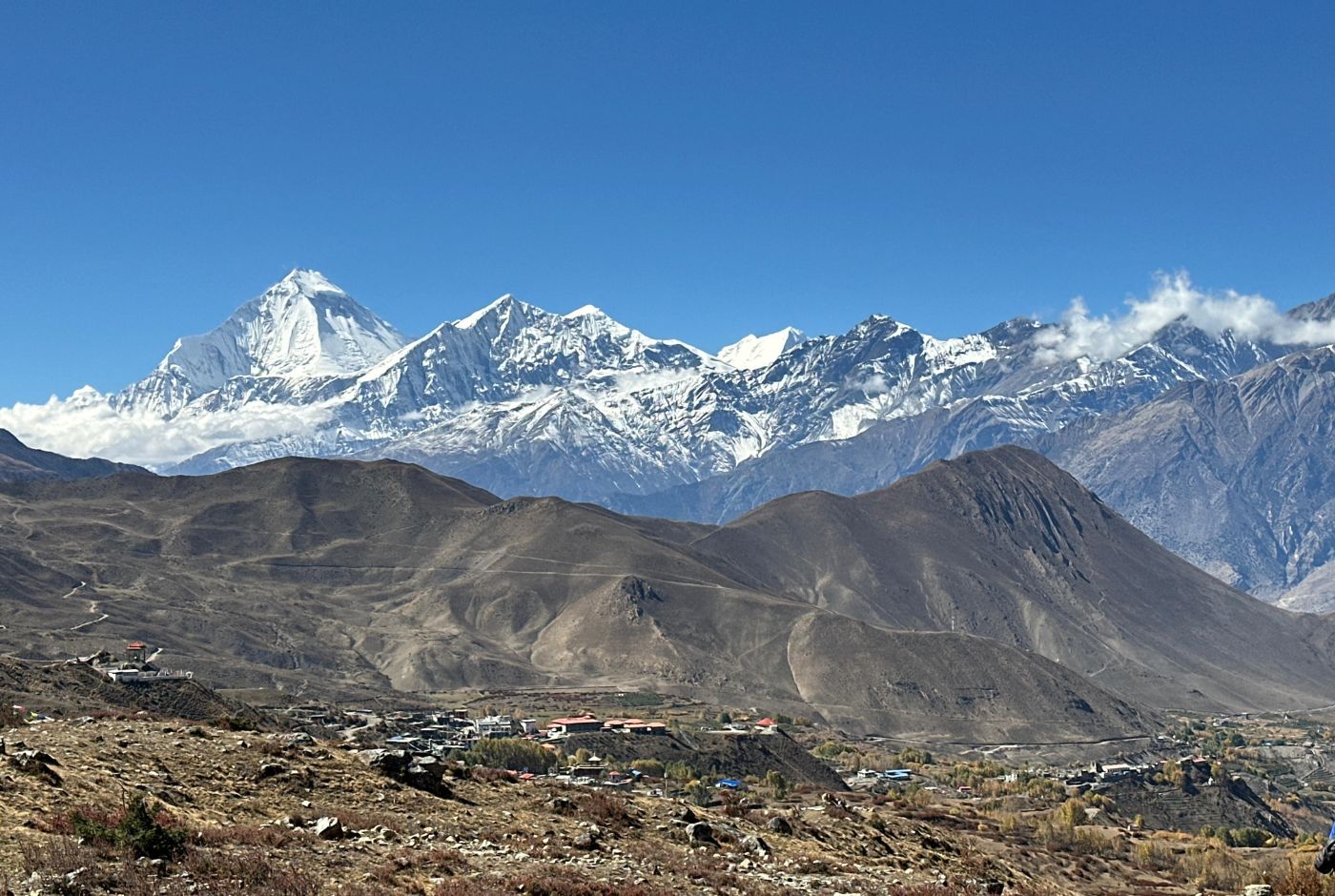
Families wanting more than a quick weekend trek should look at this nine-day route through Annapurna. Jomsom Muktinath Trek with Poon Hill covers everything from thick forests down low to landscapes that look straight out of Tibet up high. Kids around ten handle it fine if they're used to walking. Some days you walk four hours, others push closer to seven. The path follows Kali Gandaki River cutting through what gets called the world's deepest gorge. Rock walls go up thousands of meters on each side. You hit temple sites, villages where Thakali people still trade like their ancestors did, mountain views from different angles, and hot springs for soaking tired legs.
A drive from Pokhara to Nayapul gets you started. Then you hike toward Ghorepani through forests packed with oak, rhododendron, and pine. Spring brings flowers that turn hillsides pink, red, and white all at once. Poon Hill sits at 3,210 meters and comes around day three. Everyone drags themselves out of bed before sunrise to get up there in time. Light hits Annapurna and Dhaulagiri ranges and the whole thing shifts from dark blue to orange in maybe twenty minutes. Kids grumble about waking up so early but they remember standing there later, which says something about how good the view actually is.
Past Poon Hill you drop down to Tatopani. Natural hot springs there let you sit in warm water and forget about sore muscles for a while. After that the trail climbs back up following the gorge north. Here's where things get weird with the landscape. Green forests thin out. Everything gets drier. Brown replaces green. Kagbeni shows up and suddenly you're in desert conditions. Houses have flat roofs and windows stay small. Prayer flags crack in wind that never lets up. This village sat on trading routes between Tibet and Nepal for centuries. Walking the narrow stone lanes feels different from villages you passed earlier.
Muktinath Temple reaches 3,800 meters. Hindus and Buddhists both come here on pilgrimage. The place has 108 water spouts shaped like bull heads, freezing water pouring out of each one. Hindus think bathing under them cleans away sins. Buddhists say it washes away 108 defilements. Next to that sits Jwala Mai Temple where a flame burns from gas coming up through rock. Water and fire right together means something big spiritually. Even if religion isn't your family's thing, watching people who traveled far to pray here makes you think. The temple backs onto bare mountains that look nothing like the forests from earlier in the trek.
Marpha, Tukuche, Jomsom. These villages show Thakali life without tourist polish on it. People here have moved goods through the valley for generations. Houses use flat roofs for drying grain. Windows stay narrow because wind hammers through constantly. Apple trees grow around Marpha, fruit gets turned into brandy and dried snacks sold all over Nepal. Teahouses mix Nepali food with Tibetan stuff and local dishes. Dal bhat shows up every meal but you also get thukpa, momos, Tibetan bread. Family guesthouses keep things clean and serve hot food. Matters a lot after walking all day. The hosts usually talk with you over tea at night, tell stories about the valley you won't read anywhere.
Jomsom ends it. You can walk back the way you came or fly to Pokhara. Most families take the flight because doing the same route backward doesn't show you much new. Weather changes everything on this trek. June through August brings monsoon that dumps rain on lower parts and makes trails a muddy mess. March to May works better with rhododendrons blooming and skies mostly clear. October and November give the clearest mountain views and decent temperatures, though it gets cold morning and night higher up. Winter brings snow at Poon Hill and Muktinath. Possible but not great for families.
This trek works because something different happens every couple days. You're not just staring at mountains for nine days straight. Landscape totally changes. You visit a temple that matters to millions of people. You sit in hot springs. You see how Thakali families actually live and work. Kids don't get bored because the scenery and activities shift around. Highest point hits 3,800 meters at Muktinath but you spend enough time at medium heights that altitude problems rarely show up in healthy families who don't rush.
Jomsom Muktinath Trek with Poon Hill Highlights
- Climb Poon Hill at 3,210 meters before sunrise to watch light spread across Annapurna and Dhaulagiri ranges.
- Walk the Kali Gandaki gorge where rock walls shoot up thousands of meters, known as the world's deepest gorge.
- Visit Muktinath Temple at 3,800 meters with 108 sacred water spouts and an eternal flame drawing Hindu and Buddhist pilgrims.
- Soak in natural hot springs at Tatopani after several days of forest trekking.
- Experience Thakali villages like Marpha, Kagbeni, and Tukuche where old trading ways and architecture survive.
- Watch landscapes shift from green rhododendron forests to desert conditions heading toward Mustang.
- Stay in family teahouses where Thakali people cook traditional food and talk about valley life.
- Follow trade routes that connected Tibet and Nepal centuries before roads existed here.
- See apple orchards around Marpha producing fruit for local brandy and dried products.
- Walk four to seven hours daily over nine days, good for families with kids ten and up.
Why trek with Family in Nepal 2025?
A trip with family is a lovely experience in itself. Family Treks in Nepal is probably ideal for presenting your family and youngsters to culturally varied trade. Consequently, it can give you a great occasion to discover various cultures, languages, and ways of life in the Himalayas. There will be some risks, like altitude sickness, that can even get serious, so treks above 4,000m aren't suggested for kids under six years. Trekkers can personalize trek programs as per their choice, flexibility, and time in Nepal.






